As devoted pet parents, we constantly strive to provide our furry companions with the best nutrition for their health and happiness. Just like humans, dogs benefit from a balanced diet, and for some, that may include low-fat options. But what constitutes a low-fat diet for dogs, and why is it important? Let’s delve into the world of low-fat foods for dogs and explore everything you need to know to ensure your canine friend thrives.
Contents Overview
Understanding Low-Fat Diets for Dogs
A. What is a Low-Fat Diet for Dogs?
A low-fat diet for dogs is a specialized dietary regimen that restricts the amount of fat consumed by the canine. Unlike regular dog foods, which may contain moderate to high levels of fat for energy and flavor, low-fat diets aim to minimize fat intake to address specific health concerns or conditions in dogs. Typically, a low-fat diet for dogs will contain significantly reduced levels of fat compared to standard dog foods, often with fat content falling below 10-12%.
B. Why Opt for Low-Fat Foods?
- Weight Management:
- Dogs, like humans, can become overweight or obese due to excessive calorie intake, often stemming from high-fat diets.
- Low-fat foods can help manage weight by reducing calorie intake without sacrificing essential nutrients, promoting a healthy body weight and reducing the risk of obesity-related health issues.
- Digestive Health:
- Some dogs may experience digestive issues or sensitivities to high-fat foods, leading to symptoms like diarrhea, vomiting, or gastrointestinal discomfort.
- Low-fat diets are easier on the digestive system, making them suitable for dogs with sensitive stomachs, gastrointestinal disorders, or food intolerances.
- Pancreatitis Management:
- Pancreatitis is a common condition in dogs characterized by inflammation of the pancreas, often triggered or exacerbated by high-fat diets.
- Low-fat foods are recommended for dogs with pancreatitis to reduce the workload on the pancreas and minimize the risk of flare-ups or complications.
- Supports Overall Health:
- By providing a balanced and nutritious diet with reduced fat content, low-fat foods can contribute to the overall health and well-being of dogs.
- They help maintain optimal body condition, support vital organ function, and reduce the risk of obesity-related health issues such as diabetes, joint problems, and heart disease.
- Veterinary Recommendation:
- Veterinarians may recommend low-fat foods for dogs with specific health concerns or conditions, such as obesity, pancreatitis, gastrointestinal disorders, or food sensitivities.
- These specialized diets are formulated to meet the nutritional needs of dogs while addressing their unique health requirements, ensuring they receive the care and support they need to thrive.
List of High-Fat Diet
- Skinless Chicken Breast: Lean and protein-rich, skinless chicken breast is an excellent source of low-fat protein for dogs. It’s easy to digest and can be prepared in various ways, such as boiled, baked, or grilled.
- Turkey Breast: Similar to chicken breast, turkey breast is low in fat and high in protein, making it a nutritious option for dogs. Remove the skin before feeding to reduce fat content further.
- Fish: Certain types of fish, such as cod, haddock, and salmon (in moderation), are low in fat and provide essential omega-3 fatty acids, which promote skin and coat health. Avoid high-fat fish like mackerel or sardines.
- Lean Beef: While beef can be higher in fat compared to poultry or fish, lean cuts such as sirloin or round can still be included in your dog’s diet in moderation. Trim visible fat before cooking.
- Eggs: Eggs are a versatile and nutritious low-fat protein source for dogs. Serve them scrambled, boiled, or poached without added fats or seasonings.
- Low-Fat Dairy: Some dairy products, such as plain yogurt or cottage cheese, can be included in your dog’s diet in moderation. Opt for low-fat or fat-free varieties to reduce fat content.
- Vegetables: Many vegetables are low in fat and high in essential nutrients and fiber, making them excellent additions to your dog’s diet. Some dog-friendly vegetables include carrots, green beans, broccoli, and sweet potatoes.
- Fruits: Certain fruits, such as apples, bananas, and blueberries, are low in fat and provide vitamins, minerals, and antioxidants. Remove seeds and pits before feeding and serve in moderation due to their natural sugar content.
- Brown Rice: Brown rice is a whole grain carbohydrate that’s low in fat and provides fiber and energy for dogs. It can be included in homemade dog food recipes or served alongside lean protein sources.
- Oats: Oats are another whole grain option that’s low in fat and rich in fiber, making them beneficial for digestive health. Cooked oats can be mixed with lean protein and vegetables for a balanced meal.
- Quinoa: Quinoa is a gluten-free grain that’s low in fat and high in protein and essential nutrients. It’s a complete protein source, making it an excellent option for dogs with food sensitivities.
- Pumpkin: Pumpkin is low in fat and high in fiber, making it beneficial for digestive health. It can help regulate bowel movements and alleviate gastrointestinal upset in dogs.
- Green Tripe: Green tripe, the unprocessed stomach lining of grazing animals, is low in fat and rich in protein and essential nutrients. It’s often included in raw or homemade dog food diets.
- Lean Venison: Venison is a lean protein source that’s low in fat and can be a suitable option for dogs with food sensitivities or allergies. Remove excess fat before serving.
- Skinless Turkey or Chicken Drumsticks: Skinless turkey or chicken drumsticks are lower in fat compared to other cuts of poultry and can be offered as a lean protein source for dogs. Remove skin and excess fat before serving.
Choosing Low-Fat Foods
Selecting low-fat foods for your dog involves careful consideration of ingredients, nutritional content, and suitability for your pet’s individual needs. Here’s a comprehensive guide to help you make informed choices:
- Check the Label:
- Look for dog foods labeled “low-fat” or “reduced fat,” indicating they contain lower levels of fat compared to standard options.
- Check the fat content on the nutritional label, aiming for products with fat levels typically below 10-12%.
- Ensure the food meets AAFCO (Association of American Feed Control Officials) standards for complete and balanced nutrition, providing essential nutrients for your dog’s well-being.
- Ingredients Matter:
- Opt for high-quality protein sources as the primary ingredient, such as chicken, turkey, fish, or lean cuts of meat.
- Choose carbohydrates that are easily digestible and provide energy without excess fat, such as rice, barley, oats, or sweet potatoes.
- Avoid foods with fillers, by-products, artificial additives, or excessive amounts of grains, which may contribute to weight gain or digestive issues.
- Consider Fiber Content:
- Fiber is essential for digestive health and can help your dog feel full while consuming fewer calories.
- Look for low-fat foods with adequate fiber content from sources like fruits, vegetables, and whole grains.
- Ensure the fiber content is balanced to promote healthy digestion without causing excessive gas or loose stools.
- Watch Out for Hidden Fats:
- Be cautious of hidden sources of fat that may not be clearly labeled on the packaging.
- Check ingredient lists for added fats such as oils, tallow, or animal fats, which can increase the overall fat content of the food.
- Opt for foods with minimal added fats and focus on natural, whole-food ingredients.
- Consider Specialized Formulas:
- Some low-fat dog foods are specifically formulated for dogs with certain health conditions, such as pancreatitis, obesity, or gastrointestinal issues.
- These specialized formulas may contain additional ingredients or nutrients to support your dog’s unique needs while maintaining a low-fat profile.
- Consult with your veterinarian to determine if a specialized low-fat formula is appropriate for your dog’s health condition and dietary requirements.
- Trial and Observation:
- Introduce new low-fat foods gradually to allow your dog’s digestive system to adjust.
- Monitor your dog’s response to the new diet, including any changes in appetite, energy levels, stool consistency, or overall well-being.
- Adjust the portion sizes or choose alternative options if your dog experiences any adverse reactions or digestive upset.
Transitioning to a Low-Fat Diet
Transitioning your dog to a low-fat diet requires patience, planning, and careful observation to ensure a smooth adjustment. Here’s a detailed guide to help you transition your furry friend to a low-fat diet effectively:
- Gradual Transition:
- Introduce the new low-fat food gradually over a period of 7-10 days to allow your dog’s digestive system to adapt.
- Start by mixing small amounts of the low-fat food with your dog’s current diet, gradually increasing the proportion of the new food while decreasing the old food.
- Monitor Your Dog’s Response:
- Observe your dog closely during the transition period for any signs of gastrointestinal upset or adverse reactions.
- Watch for changes in appetite, stool consistency, energy levels, and overall well-being.
- If your dog experiences digestive issues such as diarrhea, vomiting, or excessive gas, slow down the transition process or revert to the previous diet temporarily before trying again.
- Adjust Portion Sizes:
- Monitor your dog’s weight and adjust portion sizes as needed to maintain a healthy body condition.
- Low-fat diets may be less calorie-dense than standard diets, so you may need to feed slightly larger portions to ensure your dog gets enough nutrients and energy.
- Consult with your veterinarian to determine the appropriate portion sizes for your dog’s size, age, activity level, and weight management goals.
- Incorporate Transition Aids:
- Consider using digestive supplements or probiotics to support your dog’s digestive health during the transition.
- These supplements can help promote a healthy balance of gut bacteria and reduce the risk of digestive upset as your dog adjusts to the new diet.
- Discuss with your veterinarian whether these supplements are suitable for your dog and how to incorporate them effectively into their diet.
- Be Patient and Consistent:
- Transitioning to a new diet can take time, so be patient and consistent with the process.
- Avoid rushing the transition or abruptly switching your dog’s food, as this can lead to digestive upset and stress.
- Stick to the gradual transition plan and monitor your dog’s progress closely to ensure a successful switch to the low-fat diet.
- Seek Veterinary Guidance:
- If you have any concerns or questions about transitioning your dog to a low-fat diet, don’t hesitate to consult with your veterinarian.
- Your vet can provide personalized advice based on your dog’s health status, dietary needs, and any underlying medical conditions.
- They can also recommend specific low-fat foods or dietary strategies tailored to your dog’s individual requirements.
Potential Risks and Considerations
Transitioning your dog to a low-fat diet can offer numerous benefits, but it’s essential to be aware of potential risks and considerations to ensure your furry friend’s health and well-being. Here’s a comprehensive overview:
- Nutritional Adequacy:
- Low-fat diets may contain reduced levels of fat, but it’s crucial to ensure they still provide all essential nutrients necessary for your dog’s health.
- Monitor the protein, carbohydrate, vitamin, and mineral content of the low-fat foods to ensure they meet your dog’s nutritional requirements.
- Consult with a veterinarian or veterinary nutritionist to formulate a balanced meal plan if you’re unsure whether the low-fat diet provides adequate nutrition for your dog.
- Individual Needs:
- Not all dogs require a low-fat diet, and some may thrive better on a moderate-fat or higher-fat diet depending on their age, breed, activity level, and health status.
- Consult with your veterinarian to determine whether a low-fat diet is appropriate for your dog’s specific needs and health conditions.
- Some dogs may require stricter fat restrictions due to underlying medical issues such as pancreatitis, while others may benefit from a more balanced approach.
- Weight Management:
- While low-fat diets can be beneficial for weight management in overweight or obese dogs, it’s essential to monitor your dog’s weight and body condition regularly.
- Adjust portion sizes and calorie intake as needed to ensure your dog maintains a healthy body weight and does not become underweight or malnourished.
- Incorporate regular exercise and physical activity to support your dog’s weight management efforts and overall health.
- Transitioning Challenges:
- Transitioning to a new diet, including a low-fat diet, can sometimes pose challenges for dogs, such as digestive upset or reluctance to eat.
- Take a gradual approach to transitioning your dog to the low-fat diet, mixing small amounts of the new food with their current diet over several days to allow for adjustment.
- Monitor your dog closely for any signs of digestive discomfort or adverse reactions during the transition period, and adjust the transition plan accordingly.
- Monitoring and Adjustments:
- Once your dog has fully transitioned to the low-fat diet, continue to monitor their health and well-being closely.
- Watch for any changes in appetite, energy levels, stool consistency, or overall behavior that may indicate the need for adjustments to the diet.
- Regular veterinary check-ups can help ensure your dog’s nutritional needs are being met and identify any potential health concerns early on.
- Consultation with Veterinarian:
- If you have any concerns or questions about transitioning your dog to a low-fat diet, or if you notice any unexpected changes in their health or behavior, consult with your veterinarian promptly.
- Your vet can provide personalized guidance and recommendations based on your dog’s individual needs, health status, and dietary requirements.
- They can also help you address any specific concerns or challenges related to implementing and maintaining a low-fat diet for your dog.
High-Fat Foods for Dogs
Bacon: This beloved breakfast staple is high in fat and sodium, making it unsuitable for dogs. While dogs may love the taste of bacon, it can lead to pancreatitis and other health issues.
Sausage: Another high-fat meat product, sausage is typically made from fatty cuts of pork or beef and seasoned with spices that can be harmful to dogs’ digestive systems.
Hot Dogs: These processed meat products are loaded with fat, sodium, and preservatives, making them a poor choice for your dog’s diet. Opt for leaner protein sources instead.
Pepperoni: While pepperoni may be a favorite pizza topping for humans, it’s high in fat, salt, and spices that can upset your dog’s stomach and lead to pancreatitis.
Salami: Similar to pepperoni, salami is a highly processed and fatty meat product that should be avoided in your dog’s diet.
Butter: While butter may seem harmless in small amounts, it’s high in fat and can contribute to obesity and digestive issues in dogs.
Margarine: A common substitute for butter, margarine is also high in fat and should be kept away from your dog.
Gravy: This savory sauce is often made with pan drippings and fat, making it a high-fat addition to your dog’s meal. Opt for low-fat alternatives or homemade gravy made from lean meats and broth.
Fatty cuts of beef: While lean cuts of beef can be a healthy protein source for dogs, fatty cuts like ribeye or T-bone steak should be avoided due to their high fat content.
Pork ribs: These indulgent treats are packed with fat and can pose a choking hazard to dogs. Stick to leaner cuts of pork or other protein sources.
Lamb chops: While lamb may be a delicious treat for humans, it’s high in fat and can lead to weight gain and other health issues in dogs.
Whole milk: While puppies may consume milk from their mothers, whole cow’s milk is high in fat and lactose, which many dogs have difficulty digesting. Opt for lactose-free alternatives or stick to water.
Ice cream: While it may be tempting to share your ice cream cone with your dog on a hot day, most commercial ice creams are high in fat, sugar, and artificial ingredients that can be harmful to dogs. Instead, make a homemade frozen treat using yogurt and fruit.
Cream cheese: This creamy spread is high in fat and should be avoided in your dog’s diet. Opt for low-fat cheese or cottage cheese as a healthier alternative.
Yogurt (with added sugars or flavors): Plain yogurt can be a healthy snack for dogs, but flavored yogurts often contain added sugars and artificial flavors that can be harmful. Stick to plain yogurt or Greek yogurt in moderation.
Pizza: While dogs may be tempted by the cheesy goodness of pizza, it’s high in fat, salt, and spices that can upset their stomachs. Keep pizza out of reach of your dog and opt for healthier snacks instead.
Fast food: Burgers, fries, and other fast food items are high in fat, sodium, and preservatives that can be harmful to dogs. Avoid feeding your dog fast food scraps and stick to homemade meals made from fresh, whole ingredients.
Potato chips: These crunchy snacks are high in fat, salt, and artificial flavors that can be harmful to dogs. Opt for homemade sweet potato chips or other healthy alternatives.
Donuts: While they may be a sweet treat for humans, donuts are high in fat, sugar, and empty calories that can contribute to obesity and other health issues in dogs.
Cake: Just like donuts, cake is high in fat, sugar, and empty calories that can be harmful to dogs. Avoid feeding your dog cake scraps and opt for healthier treats instead.
Cookies: Many cookies contain chocolate, raisins, or other ingredients that are toxic to dogs. Even plain cookies are often high in fat, sugar, and empty calories that can contribute to obesity and other health issues.
Chocolate: One of the most well-known toxic foods for dogs, chocolate is high in fat, caffeine, and theobromine, which can be fatal to dogs in large amounts. Keep chocolate and other cocoa products out of reach of your dog at all times.
Bottom Line
In conclusion, while low-fat diets can be beneficial for certain dogs, they’re not a one-size-fits-all solution. Understanding your dog’s individual nutritional needs and consulting with a veterinarian are crucial steps in determining whether a low-fat diet is appropriate. By selecting high-quality, low-fat foods and implementing a gradual transition, you can support your canine companion’s health and well-being for years to come. So, whether your pup needs a little extra help managing their weight or maintaining digestive health, incorporating low-fat foods into their diet can be a positive step towards a happier, healthier life.

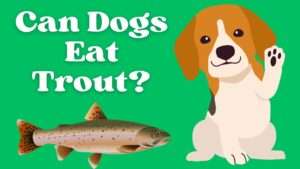
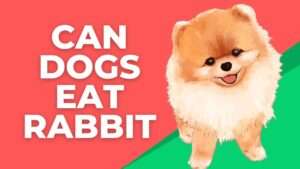

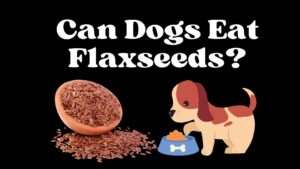
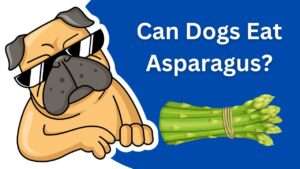
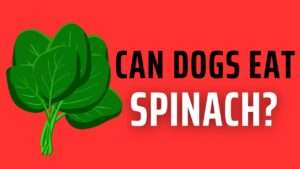
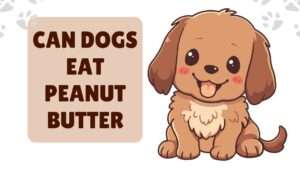

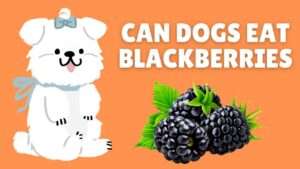
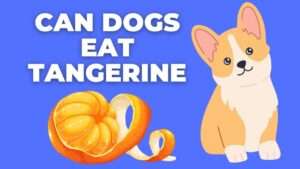
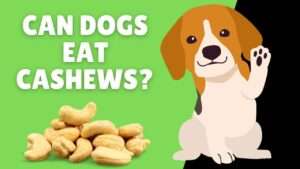

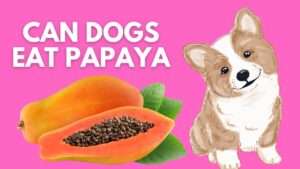
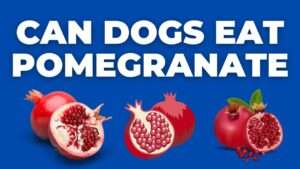
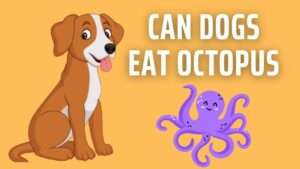
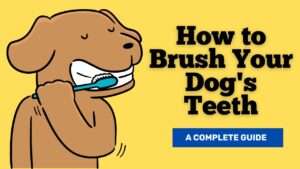
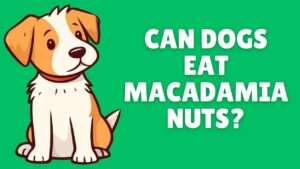
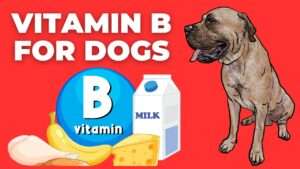
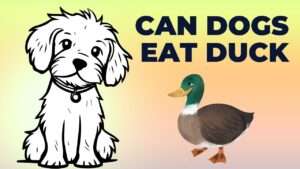
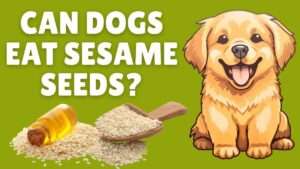
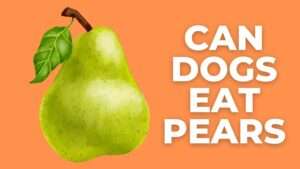
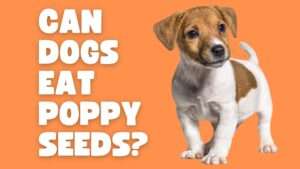
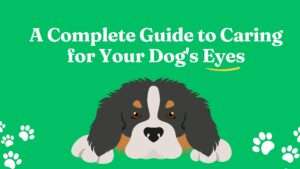
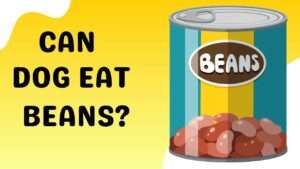

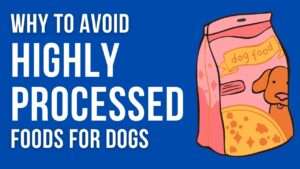
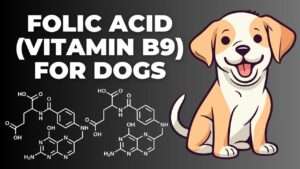








+ There are no comments
Add yours